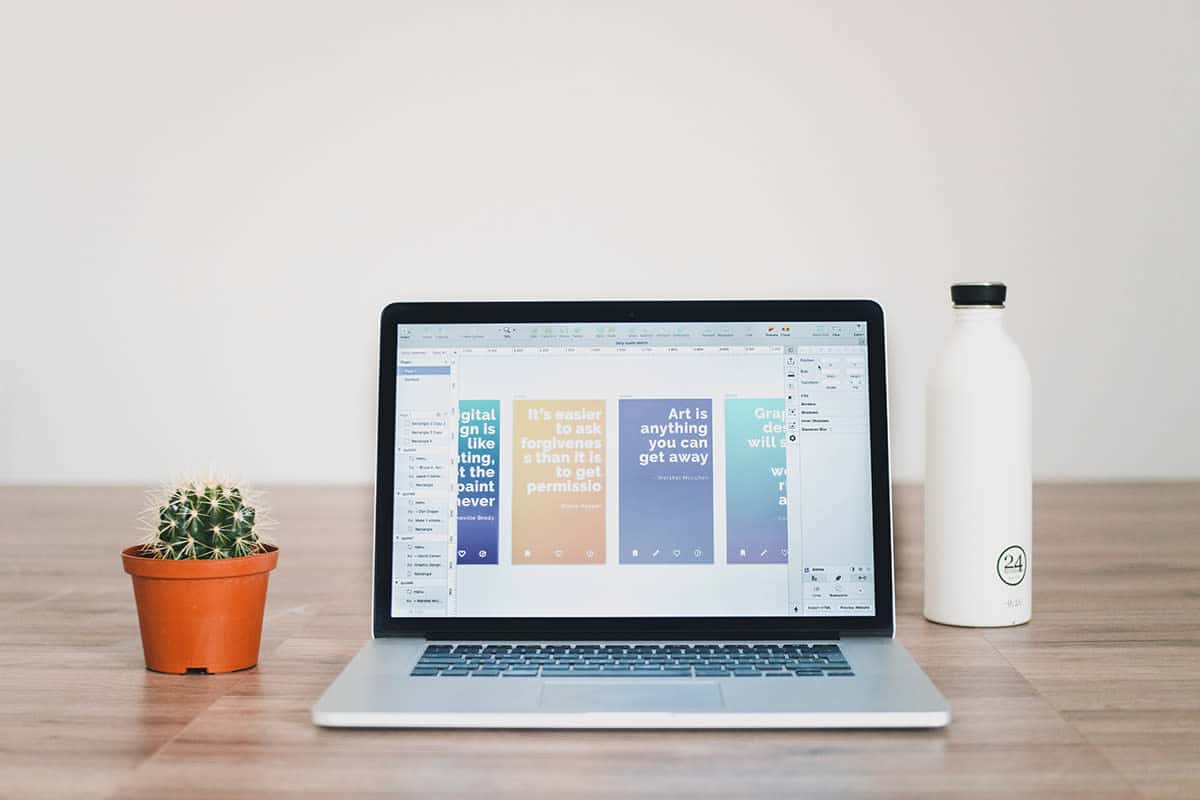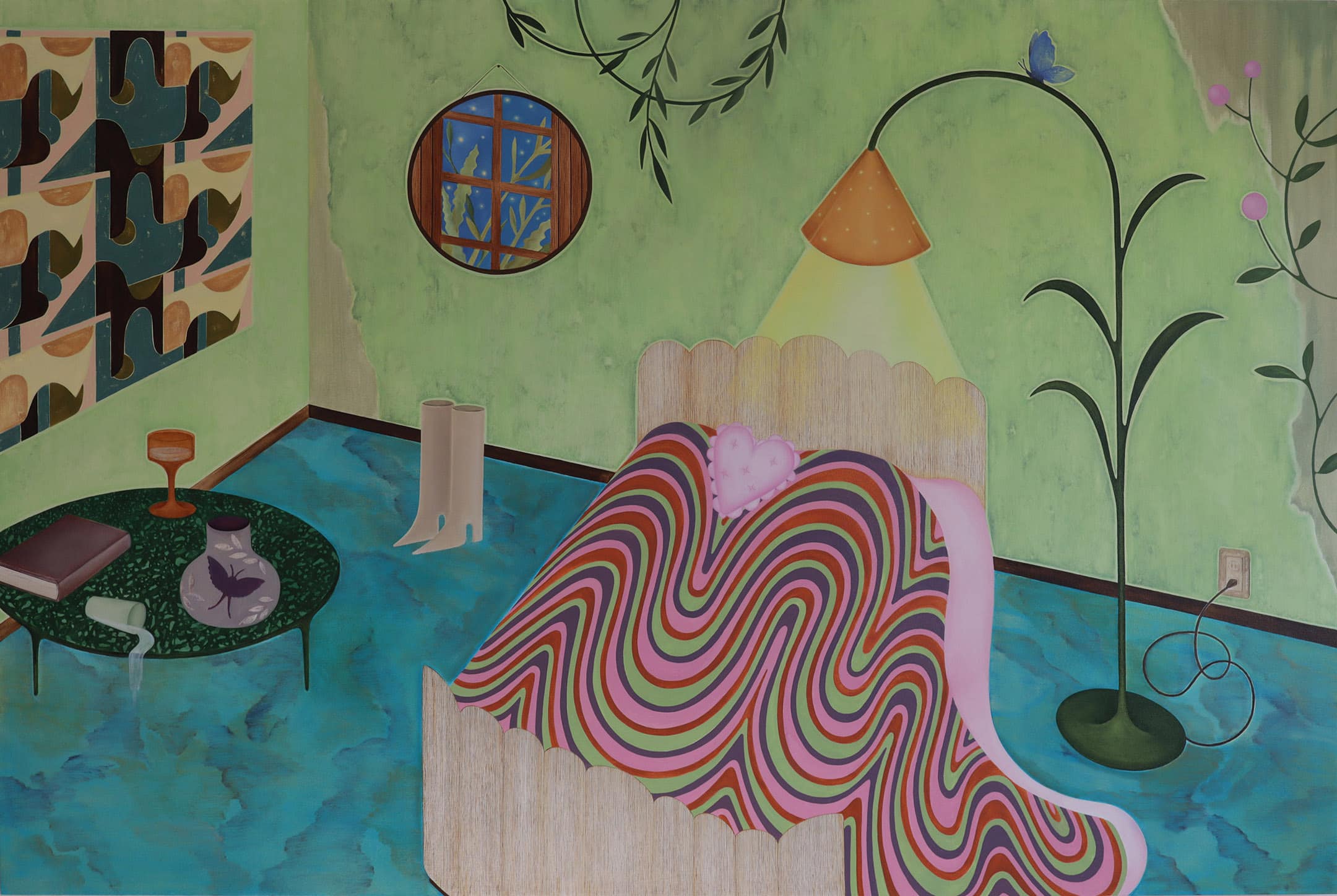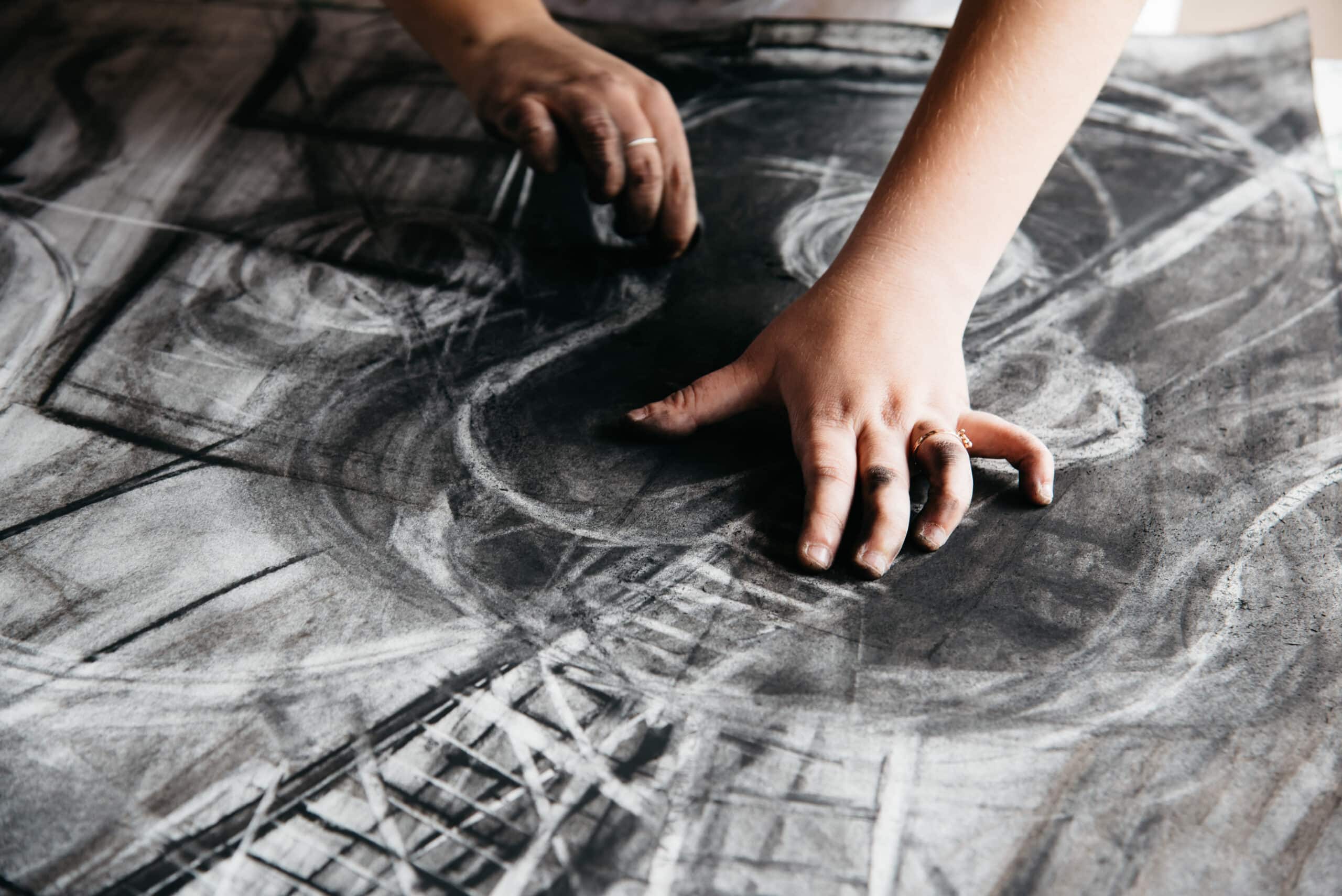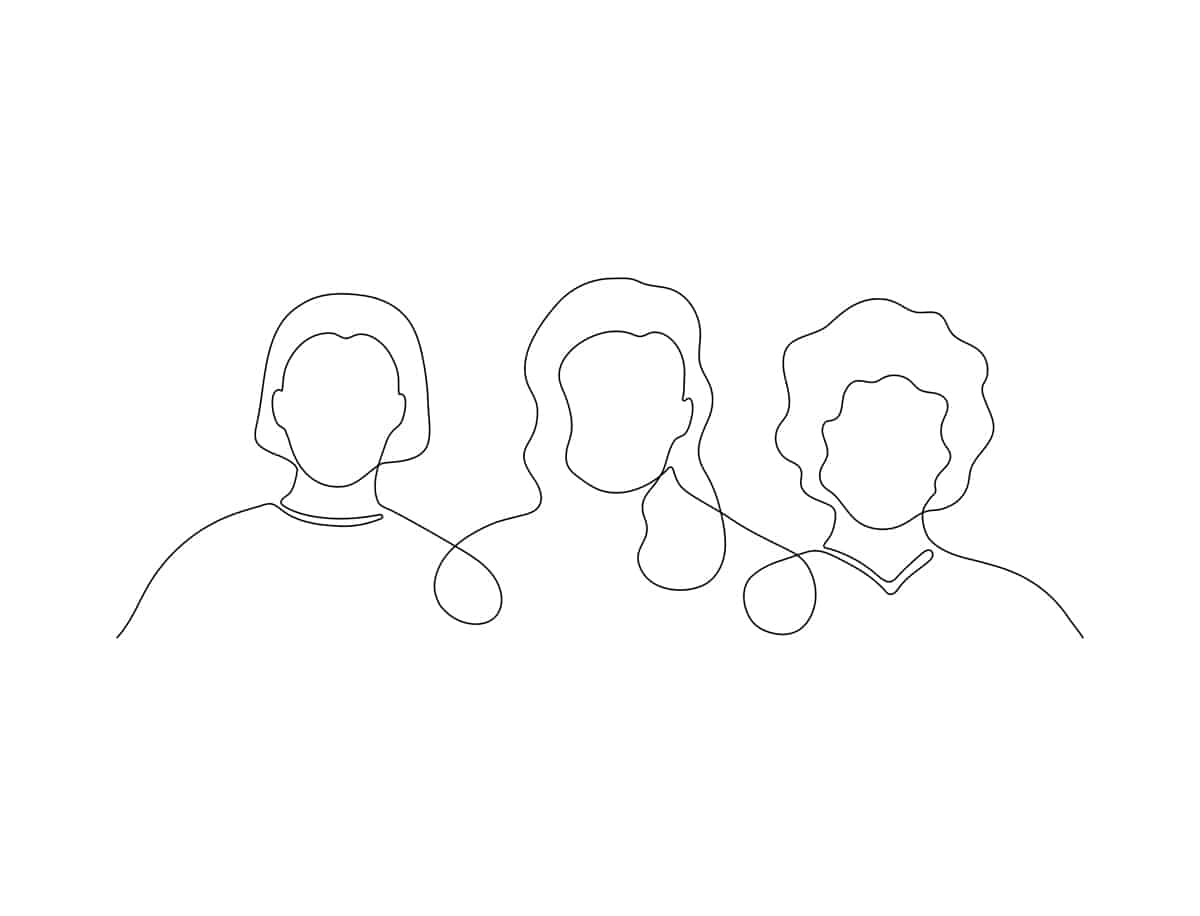When it comes to freelance design work, you are your brand. As a free agent, you’re not defined by any one business or agency. And let’s face it—working freelance graphic design jobs from home can definitely be a perk. Sounds like a sweet deal, right?
Keep in mind that juggling a consistent stream of part-time graphic design jobs can take major hustle when you’re freelance. To land freelance design work in our oversaturated and competitive market, you have to be constantly growing, developing, and adapting.
Here are our best tips and tricks to help you find (and keep!) some amazing freelance design jobs.
Create a Dynamic Online Portfolio
An elegant, professional, and aesthetically cohesive online design portfolio site is an absolute must if you want your work to resonate with potential clients. An amazing portfolio speaks for itself—it’s almost impossible to get hired for freelance graphic design jobs without one.
The Creative Group conducted a poll of 250 marketing and design execs—turns out that a whopping 63% of their decision to hire a creative professional is based on a portfolio alone.
Creating an online design portfolio is the best way to showcase your work, elevate your brand, and attract high-value professional freelance opportunities.
Ideally, your portfolio will be a perfect union of form and function; it will be beautiful, easy to maintain, and optimized to attract new clients. An excellent portfolio will work hard to land freelance graphic design jobs for you. We’re all busy, so make sure to pick a website builder that allows you to create your design portfolio in minutes.
To get some major flex from your online design portfolio, you must:
Curate It
Remember that a portfolio is a selection of your best work, not a dumping ground. How it all hangs together is extremely important, as it’s indicative of your creative process and professional workflow.
What are you most proud of? Are you using your images to tell a story? Try to start and end your portfolio with your highest-impact projects. Check out the online portfolios of other designers you respect to see how they do it.
Make It Cohesive
Dress your portfolio for the job you want by making it cohesive. Creative professionals are usually multidisciplinary with several different skill sets. When it comes to freelance design work, this versatility can be an incredible asset.
On the flip side, you don’t want to confuse potential clients with a scatterbrained portfolio (branding projects followed by a series of oil paintings followed by professional resume designs, for example). Showcase a tight selection of work that will appeal to the type of clients you want.
Keep It Fresh
Sprucing things up once a year isn’t going to cut it. If you’re not updating your online design portfolio regularly, how do you plan to attract new freelance graphic design jobs in our competitive and ever-changing market?
When selecting a site to host your portfolio, ensure it’s intuitive and fun enough to use and maintain regularly—or chances are, you won’t.
Make It Intimate
Documenting your journey on a design project through a series of videos—from brief to execution to final product—can be a meaningful way to make your portfolio stand out and offer a client a closer look at you as an individual.
If you haven’t previously documented your process, why not start a relevant, self-driven design project with the purpose of creating an engaging behind-the-scenes look at the process? This is a great way to drum up actual freelance design work!
Let’s move on to explore other components of an excellent portfolio in a little more depth.
Pick The Right Website Theme
As a designer, you know that layout is important. But choosing the right template is so much more. It’s essential to present your projects in their most flattering light and becomes an integral part of how your audience experiences and interacts with your design work. It’s the added visual context and professional polish that’s required to appeal to clients with high-paying freelance design jobs up for grabs.
Understanding your goals, playing up your strengths, and aiming for a specific outcome can help you select the right template for your portfolio. Want examples?
If you want to mimic the experience of flipping through a magazine…
Try a horizontal scroll theme and reimagine the analog experience of turning pages. This linear theme can make you an appealing candidate for freelance graphic design jobs in fashion, photography, and more.
If you want to make a big impact…
Try a full-screen theme and take up the space you deserve. This is best for stunning, high-quality visuals that speak for themselves.
If you want something kinetic…
Try a slideshow theme and create the feeling of moving through a gallery. Easy on the eyes and easy to swipe through, slideshow themes are an engaging way to present your work.
If all your projects play well together…
Try a tiled theme and put your pieces in conversation with each other. Tiled themes are best if all your projects share a similar aesthetic since they will be viewed as a mosaic. If they make a bigger impression when taken visually together, tiled is the way to go.
If you want something clean and classic…
Try a vertical theme. No matter what their preferences are, the clients looking to hire you for freelance design work will be familiar with the classic up-and-down scroll format. Your work will speak for itself.
It’s important to remember that many portfolio themes will incorporate a variety of layout and gallery aspects (you can have a theme that is a vertical tiled layout, for example). Have your cake and eat it, too—experiment with different themes by finding a portfolio website that offers a free trial.
Or, even better, if you have the know-how and a few extra dollars in your budget a month, go for a premium theme that’s custom-tailored just for you and your work.
Write a High-Impact About Me Section
Obviously, the visual elements of your portfolio like layout and gallery style are integral to attracting the right freelance graphic design jobs. Even if you’re getting your work in front of the right eyes, studies show that 38% of your audience will simply click away if the content or layout is unattractive.
Once you have the right theme selected, it’s time to tackle content. Do not underestimate the power of the written word—especially when it comes to arranging the contents of your biographical statement.
The About Me section on your website should work as hard as your portfolio. Reveal the human element of your freelance design work with these tips.
Add a Personal Introduction
There’s no need for a formal third-person bio in your own portfolio. A friendly and concise glance at who you are and what you’re passionate about makes for a great opening line.
Mention Your Home Base
We know it’s the 21st century and it’s likely that you will be working many freelance graphic design jobs from home. Regardless, mentioning the city you’re based in can give clients an idea about who you are, what currency you might charge in, and whether you’re available for local contracts.
Be Picky About Which Experiences You List
The importance of curation also applies to the contents of your About Me page. Don’t create an impenetrable wall of text by listing every single project you’ve ever worked on. What’s more, seeing your work in action is more meaningful than reading a long list of professional experiences. Think about the freelance design jobs you hope to secure in the future and highlight accordingly.
Include Awards and Accomplishments
It’s good to be humble when the situation calls for it, but if you’ve actually taken some awards home, been nominated for design-related prizes, have received arts funding, are part of a professional association, or have had your work recognized by your peers, make sure to mention it!
Highlight Your Side Hustles
Have a creative life outside of work? Share your passions! This shows great initiative—and offers additional insight into your (well-rounded) personality. It can also help your bio stand out compared to all the other designers vying for the same freelance design work as you.
Add a Headshot or Self-Portrait
An important step in adding a human element to your portfolio is including a professional headshot, or a more creative portrait of yourself (depending on your preference). Putting a face to your name and design work makes an unforgettable impression.
Make Sure the Copy is Clean
There’s nothing that can sink an otherwise dazzlingly constructed About Me page than an unsightly typo, grammatical error, or—gasp—misspelled word. Even a small oversight will stand out like a sore thumb. Ensure it’s clean and concise by doing a thorough proofread.
Play with the Structure
If a typical bio isn’t your style, try playing around with the design and structure of your About Me page. Imitate the format of a questionnaire or Tinder bio, create a timeline or family tree for your projects, or organize your info into bullet points or columns.
Create Value Through Blogging
Want to stand out in the search for freelance graphic design jobs? Add additional value to your design portfolio site by maintaining a lively and informative blog. Whether you moonlight as a writer on the side or not, you have a lot to offer on your blog—especially if you want to attract new clients. You have an unbelievable 434% better chance of ranking higher on search engines if you make your blog a key part of your website.
As a creative professional looking to attract new business, consider some of the following content ideas and best practices:
Blog frequently. Statistics show that places that post daily get five times more traffic than those who don’t. Even if you can’t commit to daily posts, the more often you share, the better.
Post on a consistent schedule. An erratic posting schedule looks unprofessional and your audience won’t know when to check back.
Share your process. Give an insiders look on a specific design project’s journey from conception to completion.
Show a day-in-the-life. An intimate look at your day in the studio or a rundown of your typical creative routine can be a great way to generate content for your blog.
Highlight another designer. If you’ve ever collaborated successfully with a peer on a freelance design job with successful results, why not interview or profile them on your blog? Maybe they’ll also return the favor!
Clean copy is key. It’s the same principle we covered in the About Me section above—do everything in your power to make sure your blog doesn’t come off as amateurish due to typos and bad grammar.
Offer resources. If you have some amazing design tips and tricks up your sleeve, be generous by blogging about them! Sharing specialized knowledge in your industry can help solidify your status as a trailblazer and drive the right connects to your site.
Try a Q&A roundup. Compile all the most popular design-related questions that you hear on a daily basis in one place.
Prioritize SEO. Make sure your blog pops up when potential clients use Google by engaging in search engine optimization best practices.
Pay attention to length. According to the popular website Medium, the ideal length for a blog post is around 1,700 words—a seven-minute read. Even so, shorter posts can be extremely effective as well. Don’t overestimate your audience’s attention span.
Now, onto networking!
It’s Time to Start Networking
Whether you’re looking for a consistent stream of work or more part-time graphic design jobs, neither will be easily accessible to you unless you leverage your connections and make networking a priority.
The work of many creative professionals can sometimes seem solitary. Freelance design jobs can take hours of butt-in-chair labor, but it’s crucial to get out of your own head and workspace.
Give these classic, human-based networking strategies a try:
- Go to industry events and mixers.
- Attend art and design conferences.
- Hand out beautifully-crafted business cards.
- Send personalized thank-you notes to past clients.
- Perfect your pitch so you’re never blindsided by the question, “What do you do?”
- Follow up with old design school classmates, peers, and creative professionals you’ve met in the field.
- Ask satisfied clients to refer you to people they know who can offer freelance design work.
- Keep up with and celebrate the successes of others whenever you can.
Then try out these modern social networking strategies:
- Maintain an active social media presence (make sure to always link back to your portfolio across platforms).
- Create a social media strategy to help lure in as many new paying clients as possible.
- Interact with your followers and engage authentically for deeper, more lasting connections.
- Showcase elements of your work and general aesthetic on freelance graphic design websites like Dribble and Behance.
- Use LinkedIn to keep up with current and future connections.
- Follow freelance design hashtags on Instagram, along with other cool designers.
- Join Reddit and visit subreddits geared specifically to working designers such as /r/DesignJobs.
Speaking of…
Hit Up Freelance Design Job Websites
No matter how incredible your portfolio, how enticing your bio, and how excellent your networking game is, clients might not come flocking to you on their own.
There is no shortage of design talent out there for clients to choose from, so it’s still your responsibility to take initiative and seek out the type of freelance design work that you want.
There are some amazing roundups of websites and resources to get your art and designs published or featured online and in print. But when it comes to winning lucrative contracts, here are five of our favorite freelance graphic design websites specifically tailored to help you increase your client base and attract new high-value opportunities.
99designs
With the tagline “Fre up your freelance career,” 99designs is sure to spark something good. Catering to a variety of designers working in marketing, branding, advertising, illustration, merchandising, and more, this is one of the most popular freelance graphic design websites, with a global reach.
It’s simple: clients upload a brief for a specific project to 99design’s global freelancer network. With such a wide reach, be prepared for some competition in winning clients.
The upside? It’s a great way to gain experience and build your portfolio if you’re starting from scratch. 99design offers a well-rounded experience—there’s the potential for collaboration, skill development, competing in design contests, and networking through the platform. Come for the freelance design work, stay for the community.
Upwork
Upwork is a popular and easy-to-use site for potential clients across numerous industries and suitable for freelancers at any stage of their career. Just how popular? More than 10 million freelancers are seeking work from upwards of four million active clients across the globe. If you prefer working freelance design jobs from home, you’re sure to appreciate Upwork’s global network.
With comprehensive features such as the option to create a highly detailed freelancing profile and the ability to chat with clients before accepting work and throughout the design process, Upwork helps ensure that you’re gunning for freelance graphic design jobs that are highly relevant and valuable to you, your skill set, and your workflow.
Fiverr
While Fiverr is not the venue to land huge freelance design work opportunities immediately, it’s an undeniably quick and easy way to win part-time graphic design jobs. If you’re confident in your design chops but don’t necessarily have the mileage to show for it yet, Fiverr’s freelance marketplace is for you.
Freelancers can create a simple “gig” that includes a brief statement on the services being offered (from illustration to logo design to book and album covers and everything in between) and set a rate from $5 to $995.
As you may have guessed from the name, originally Fiverr only allowed you to charge $5 per gig so that clients could take a chance on your work with little financial risk. Though they’ve since branched out, try to keep your rate low—after you wow your client and build a relationship, you can work up to a better rate. Even if you work freelance graphic design jobs from home, Fiverr is a great way to foster that entrepreneurial spirit.
AwesomeWeb
Catering specifically to graphic designers, AwesomeWeb earns its name by promising no unpaid work and no bidding wars to win clients. Every freelancer is reviewed before earning a spot on the website’s freelancer directory, so big clients frequent the website and offer high-quality freelance design jobs. That means you don’t have to juggle several different small contracts—you can earn more focusing on one.
AwesomeWeb has grown slowly (which means you’re competing with hundreds—not millions—of other freelancers) and focuses on quality by continuing to personally review each freelancer and promises no hidden fees. What’s more, they also offer personalized customer support to both clients and freelancers.
Robert Half Staffing
Robert Half is a professional staffing service that caters to people in all industries seeking contract, freelance, and full-time hires. If you’re looking for freelance design work, simply set the site’s filter to “graphic designer” or “visual designer.” There is also a variety of other filters designed to show you only the opportunities that best suit you.
The website has quite a wide network of respected clients and there is a lot of work to go around. As an added bonus, Robert Half also provides advice, training, recommendations, learning materials, and other free career resources.
Use Instagram to Attract Design Clients
Social networking sites are one of the most powerful, affordable, and accessible tools in a freelance designer’s arsenal. Maintaining an active and engaging presence on social media can boost brand awareness, help you reach new audiences, and maybe even make your work go viral.
But it’s not just about visibility. Leveraging the power of social media is helping people land lucrative freelance design work. Creative professionals are even using unexpected platforms like Tinder to secure new freelance clients!
When it comes to landing freelance graphic design jobs, Instagram is unparalleled. We’ve compiled some tips to ensure that clients will be sliding into your DMs with paid opportunities in no time!
Stick to a single aesthetic.
All black-and-white photography? Great. A gorgeous behind-the-scenes look of your creative life as a designer? Yes, please! A mix of random everyday shots of varying quality sprinkled in with a few design pieces? No, thank you. Consider keeping the colors and tones consistent, too.
Post consistently and often.
Think about how many times the average person checks Instagram a day! If you want your account to be a go-to spot, post as frequently as possible and on a regular schedule. You can use an Instagram scheduler tool to help with that.
Be mindful of when you post.
Did you know Instagram users engage more from Monday to Friday? If you want freelance design jobs to start hitting your DMs, make sure you post when it counts the most. Instagram analytics apps can aid you in figuring out the best time to post.
Engage with others.
If you don’t follow, like, and comment on other design Instagram accounts, you can expect the same tumbleweed treatment in return.
Use and follow design hashtags.
There are 142,000+ posts using the hashtag #freelancedesigner—get in on the action! Instagram posts with at least one hashtag boosts user engagement by at least 12.6%. Include as many relevant hashtags as possible to show up widely in design-related searches, and follow your peers’ work as well.
Host giveaways and contests.
A great way to boost engagement and gain new followers is to host giveaways. Have your followers comment or tag friends to win a piece of artwork or personalized design. You can also offer additional entries if your followers include your post in their Instagram stories or post about your work on their own page.
Use emojis.
It may seem like a small thing, but stats show that at least 50% of Instagram posts and comments contain emojis. It makes sense; it’s a visual platform, you’re a designer, so use more eye-catching icons to catch your audience’s attention.
Share across platforms.
As a designer, Instagram is the jewel on your crown—but that doesn’t mean you should neglect your other social media platforms. Drive traffic back to your Instagram page by sharing your posts to Twitter and Facebook.
Link back to your portfolio.
At the end of the day, you want your portfolio to take center stage and be easily accessible. When your audience takes a look at your beautiful online portfolio website, you’re sure to seal the deal on the freelance design jobs of your dreams.
Want to find out more about growing your audience and attracting freelance clients?
How To Get 20k Instagram Followers
How Four Artists Use Their Website to Sell Their Work
Study: How Does The Quality of Your Portfolio Site Influence Getting Hired?












